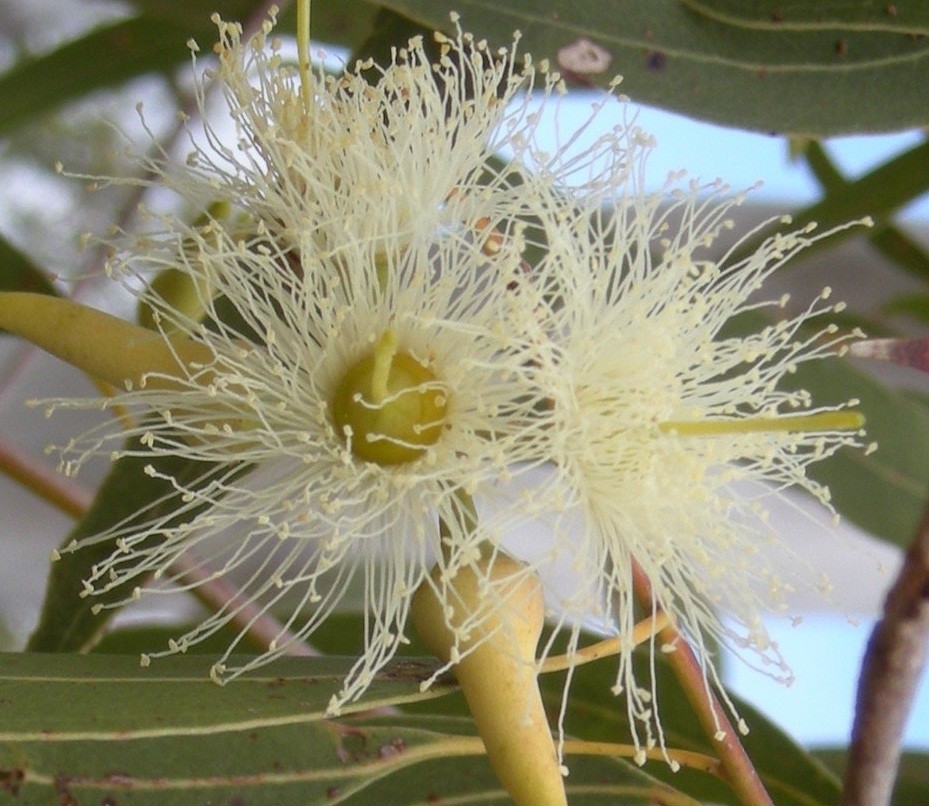Snow gum
(Eucalyptus pauciflora)

Description
Eucalyptus pauciflora, commonly known as snow gum or white sallee, is a species of eucalyptus tree native to southeastern Australia. This tree is renowned for its striking appearance, with its smooth, white bark and green-blue leaves. In this article, we will delve into the fascinating world of Eucalyptus pauciflora, exploring its physical characteristics, habitat, uses, and much more. Physical Characteristics Eucalyptus pauciflora is a small to medium-sized evergreen tree that can grow up to 15-30 meters (50-100 feet) tall, with a diameter of up to 1 meter (3 feet) at the base. The tree's smooth, white or grayish bark peels off in large, irregular patches to reveal a yellow, green or pinkish bark beneath. This bark is often used for decorative purposes, and its unique texture and color have earned it the nickname of "snow gum." The tree's leaves are another notable feature, with their bluish-green color and lance-shaped appearance. They are around 8-15 centimeters (3-6 inches) long and 1-2 centimeters (0.4-0.8 inches) wide, and they grow in pairs along the stems. The flowers of Eucalyptus pauciflora are white, cream or yellow and appear in clusters of 3 to 7 in the leaf axils from late autumn to early spring. Habitat and Distribution Eucalyptus pauciflora is native to southeastern Australia, where it is found in the alpine and subalpine regions of New South Wales, Victoria, and Tasmania. The tree is well adapted to the harsh mountain climate, withstanding temperatures as low as -20°C (-4°F). It is also resistant to snow and frost, making it a popular choice for gardens and landscaping in areas with cold winters. The tree prefers well-drained soils and can tolerate a range of soil types, including sandy and loamy soils. It is commonly found in rocky, mountainous areas where it can withstand harsh weather conditions and compete with other species for limited resources. Uses Eucalyptus pauciflora has a range of uses, both commercial and cultural. The tree's essential oil, which is extracted from its leaves, is used in aromatherapy and as an ingredient in many cosmetic and pharmaceutical products. The oil is also used as an insect repellent and as a natural disinfectant. The wood of Eucalyptus pauciflora is hard and durable, making it suitable for a range of applications, including furniture, flooring, and construction. The tree's bark is also harvested for use in decorative crafts and as a natural dye. In Aboriginal culture, Eucalyptus pauciflora has significant cultural and spiritual significance. The tree is believed to have healing properties, and its leaves are often used in traditional medicine to treat a range of ailments, including coughs, colds, and fever. Conservation Status Eucalyptus pauciflora is classified as a species of "least concern" by the International Union for Conservation of Nature (IUCN). However, like many native Australian trees, it faces a range of threats, including habitat loss, fire, and climate change. Conclusion Eucalyptus pauciflora is a remarkable tree with a range of physical, cultural, and commercial uses. Its unique appearance, hardiness, and adaptability make it a popular choice for gardens, landscaping, and forestry. However, as with many native species, its survival is dependent on careful management and conservation efforts.
Taxonomic tree:







